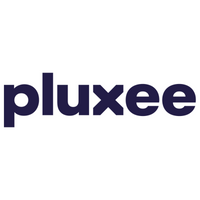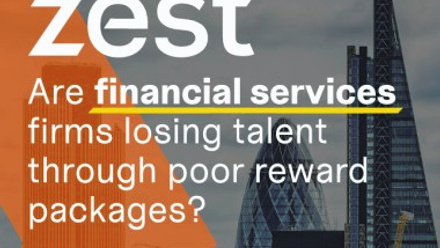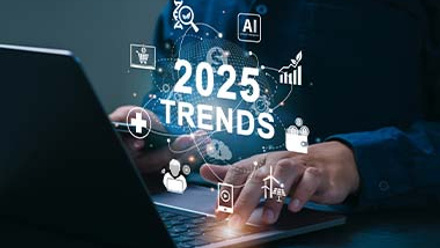How to engage a multi-generational workforce in wellbeing benefits

Yet HR professionals face a real challenge in engaging an increasingly multi-generational workforce. In many organisations, the oldest generation is still driving and running the workplace, while the majority of employees are now younger and respond differently to employee benefits that the older generations want.
The task for HR professionals is to bridge that gap and find the right balance of employee benefit offers to meet the needs of all their employees.
Why does employee wellbeing matter?
In 2012 PwC calculated the cost of absenteeism in the UK as £29 billion, making employee wellbeing something that organisations cannot afford to ignore.
Several studies highlight the clear relationship between the implementation of health and wellness initiatives and the reduction in staff absenteeism and increases in productivity. As a result, in the last four years there has been as significant rise in the number of organisations implementing health and wellbeing strategies and here’s why:
- 91% of workers at companies that support well-being efforts say they feel motivated to do their best
- 40% of employers see sickness absence rates improve
- 46% of organisations that provide health care coverage to their employees have increased employee participation in preventive health and wellness initiatives to control health care costs
- 61% of employees agree that they’ve made healthier lifestyle choices because of their company’s wellness program
- 21% of organisations credited health and wellness initiatives for lowering staff absence rates
Which health and wellbeing benefits are popular?
You’re not alone when it comes to offering employees healthy lifestyle benefits: it’s a popular option. In 2015 four out of five (80%) organisations provided wellness resources and information, and 70% offered wellness programs.
There is a huge range of health-focused employee benefits you can offer your employees- some of the most popular ones include:
- Preventative workplace health initiatives, such as offering free fresh fruit and water in offices, programmes to help employees stop smoking or lose weight and screening tests to detect diseases such as cancer.
- Wellbeing benefits that support employees in keeping healthy, such as Cycle to Work schemes, wearable fitness technology, subsidised gym memberships and discounts at healthy food outlets for employee lunches.
- Work-life balance benefits, such as holiday purchase schemes and flexible working.
- Financial wellbeing and mental health support programmes, such as employee assistance programmes, workshops on managing household budgets and access to financial management services.
However, remember that rather than implementing popular health and wellbeing benefits it is important to choose the benefits that will most appeal to your multi-generational workforce.
How to appeal to all ages
To determine which wellbeing benefits appeal to different generations of employees, a good first step is to carry out an audit to establish the demographics of the organisation and work out who will be responsive to what is on offer.
It’s also important to get a good balance between offering the right employee benefits in order to promote a healthy lifestyle and advocating good practice in the office by leading by example. For example, managers leaving their desks and having a lunch break so employees don’t feel they have to work through their breaks, which can lead to increased stress.
Nearly three quarters (73%) of employees with senior managers who showed support, and walked the walk, through involvement and commitment to wellbeing initiatives told the American Psychological Association that their organisation helped employees develop a healthy lifestyle.
Many organisations offer their employees extra incentives and rewards for getting involved in workplace health and wellbeing initiatives.
- According to the Kaiser Family Foundation 31% of large firms offering health benefits provide an incentive to complete a health risk assessment and 28% provide an incentive to complete a biometric screening.
- Meanwhile SHRM reported that 40% of organisations offered rewards or bonuses for completing certain health and wellness activities (SHRM, 2015)
By using online portals and apps to reward employees with gifts, discounts or digital badges employers can encourage employees to participate in health and wellness activities.
Another way to get employees involved is to have employee champions. Engaged workers are 28% more likely than their actively disengaged peers to get involved in company-sponsored wellness programs according to Gallup. Employee champions can use the skills, knowledge and experiences to talk to their co-workers about wellbeing initiatives and the impact it has had one them.
Poor communication is self-defeating
Employers are wasting an opportunity to engage employees of all generations in their employee lifestyle benefits. Less than one in five (16%) organisations make a point of issuing regular communications on their benefits package.
Through experience, we know that HR professionals often have a tricky job understanding how to motivate and reward a workforce that is made up of multiple generations. But by taking a generational approach, HR departments can improve benefits uptake, drive staff performance and retain valuable team members.
Regular communication encourages employees to engage and participate in employee wellbeing benefits, so getting the communications right for each different generation is key.
For example, purchasing extra holidays is not only of interest to young people seeking more opportunity to travel but will also appeal to Generation X who have a family and want to improve their work-life balance and even Baby Boomers who want to spend more time with grandchildren. It’s therefore essential to ensure that you communicate different messages about the same benefit to the different generations in your workforce.
To help you here’s a quick guide to communicating with the different generations:
|
Generation |
Generation Z |
Millennials |
Generation X |
Baby Boomers |
|
Which are the communications platforms most likely to reach me? |
Apps, social media, instant messaging appeal to this generation, who expect information available to them at a time that is convenient to them - not your annual benefits window. |
To reach these high-tech individuals regarding their benefits, you should be prepared to communicate with them via social media, texting and instant messaging. |
Gen Xers prefer to do their own research online prior to making decisions, so provide links to benefits websites and videos. Also be prepared to communicate about benefits via email, but don’t hesitate to pick up the phone or schedule an in-person meeting to provide further clarification as needed. |
While many of them use social media, not all of this generation is technologically savvy, so be open to personal communication methods as well as direct mail and PowerPoint presentations. |
|
What language should you use? |
Use succinct messages and don’t be afraid to use humour or visual stimulus to attract the attention of these ‘digital natives’. |
With a shorter attention span than previous generations, be sure to use your limited face-to-face time wisely to maintain their interest. |
This generation is not too big on small talk, so keep your messages concise. |
Do not use slang or overly casual language with this audience. |
James Malia is the director of employee benefits at P&MM Motivation, part of the Sodexo family.

This article was provided by P&MM Employee Benefits, part of the Sodexo family.
Supplied by REBA Associate Member, Pluxee UK
Pluxee UK, is a leading employee benefits and engagement partner that opens up a world of opportunities to help people enjoy more of what really matters in their lives.







